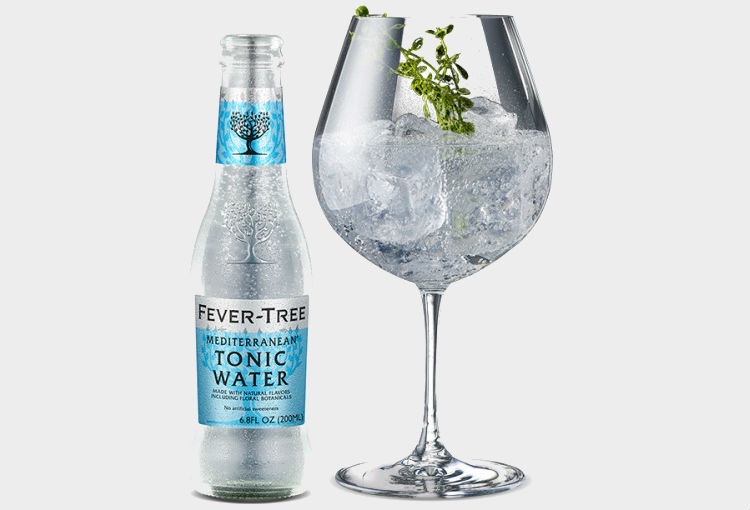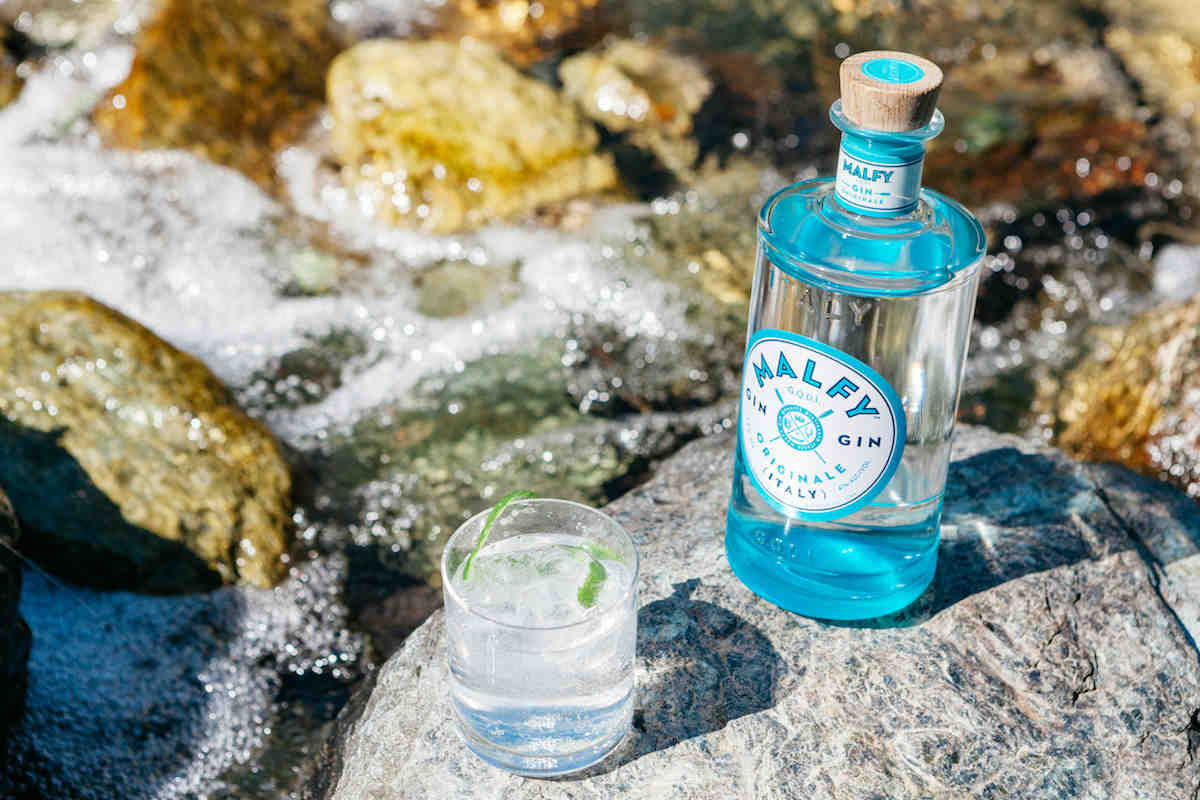Since before Latin speakers christened it “The Middle of the Earth,” the Mediterranean has had an outsized influence on the world stage. From the alphabet (thanks Phoenicians!) to reason (thanks Greeks!), it’s hard to pass a single day without recognizing our debt to that big ol’ lake between Europe and Africa.
In more recent years, the “Mediterranean Diet” rose from its waters to demand we trade in our greasy saturated fats in favor of life-giving olive oil. The latest emergence from that sea is similarly digestible, but it’s not promising to extend your lifetime.
We’re talking about Mediterranean Gin.
Mediterranean Gin
There’s no precise definition for Mediterranean Gin, nor are there any DOC laws or government regulations. For what it’s worth, you could start making Mediterranean Gin in Montana, should you feel the inclination.
What’s been driving the conversation around Mediterranean Gin are two brands: Gin Mare and Malfy Gin. The first is Spanish, with a distillery located just outside of Barcelona. The second is Italian, and distills just outside of Turin. Gin Mare labels itself a “Mediterranean Gin,” straight on the bottle, while Malfy is more comfortable leaning into its Italian heritage (on its website, the brand proudly contends that Italian monks were the first to distill gin along the Amalfi coast in 1050 A.D.).
What unites each is the use of regional ingredients, which shine just as brightly in the flavor profile as the required juniper. In the case of Gin Mare, that’s Arbequina olives, a varietal strongly associated with Catalonia, while Malfy uses lemons grown on the Italian coast. (Gin Mare also employs Italian basil, Greek rosemary, and Turkish thyme, while Malfy uses Italian juniper.) But those aren’t the only games in town, with newer entrants to the category including Portofino Gin and EnGine.

Two other self-described Mediterranean gins have yet to come stateside. Gin L’Arbre is a Spanish gin featuring lemon, thyme, rosemary, and basil that’s described by its maker as being a “London Dry Gin made from Mediterranean botanicals.” And O’ndina gin, launched in the UK in 2018, is a Campari Gruppo affair that uses basil and juniper and labels itself “The Spirit of the Italian Riviera.”
5 Mediterranean Gins to Try Now
Gin Mare
As noted above, Gin Mare is a Spanish gin whose botanicals include rosemary, basil and thyme. One of the earlier self-proclaimed Mediterranean gins, it’s been influential in building the sub-category’s herbaceous and slightly savory character since its introduction in 2010.
Gin Mare Capri
A special-edition spin-off of the original, Gin Mare Capri seeks to conjure its namesake island with additional botanicals including Capri lemons and Calabrian bergamot. Compared to the original, it’s a bit more citrusy with a cooling, herbal touch.
Malfy Gin
This distiller produces three gins: Malfy Originale, Malfy Con Arancia, and Malfy Rosa. The original is unsurprisingly defined by Italian ingredients, particularly Italian-grown lemons and juniper. It’s marked by a pronounced, zingy citrus quality, but doesn’t skimp on the juniper.

EnGine
Nevermind its aggressively punny name and novelty packaging (it’s made in Marche, which happens to the auto manufacturing capital of Italy). EnGine is made by Disaronno and is vacuum distilled with organic Italian botanicals that include Ligurian sage, lemon, licorice root, and Damask sage. It’s green and unctuous, with a surprisingly satisfying olive note.
Portofino Dry Gin
Named for the Italian town you may recognize from a million Instagram stories, Portofino Dry Gin is produced in Italy from 21 botanicals, some of which—including juniper, lemon, lavender, rosemary, marjoram, sage, iris, and rose, are grown organically at the maker’s botanical sanctuary around the hills of Portofino. It’s soft and floral but ends with a strongly savory rosemary note backed up by peppery juniper.
Mediterranean Tonic
Where there’s gin, there’s tonic, and the flavors of the Mediterranean have also made it into the former. For that you can thank Fever Tree, which distinguishes its Mediterranean Tonic from the normal line by dialing back the quinine quotient and introducing rosemary and Provence-grown lemon thyme. Combining it with Gin Mare will not make your kitchen explode, but it will give you a fizzy, rosemary-forward G&T.
Mediterranean Gin and Tonic

Gin Mare and Malfy Gin are relative newcomers to the scene, but as anyone who’s ever spent a semester in Madrid can tell you, the Spanish have been enjoying their Gin and Tonics uniquely for generations. Rather than reaching for the staid lime wedges that dominate Anglo-American consumption, the Spanish spruce their Gin and Tonics with a slice of lemon and a sprig of rosemary or other herbs, preferably within a wide-mouthed wine glass.
Feel free to add a bit of the Mediterranean to your own cocktail hour by doing the same, even if it’s with last summer’s bottle of Beefeater.



